Caught in the Carrot Crossfire
Pesticide Spraying Worries Cuyama Valley Residents
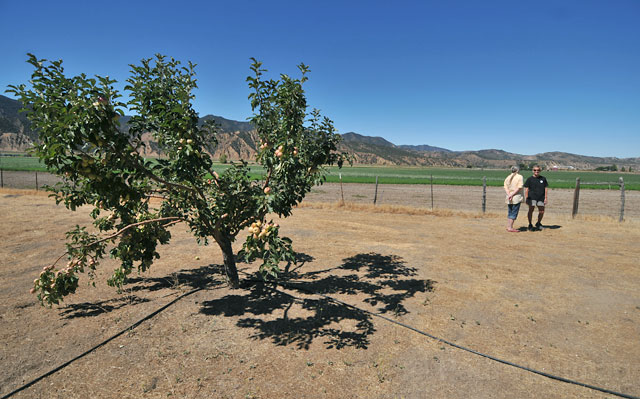
Though orange under the soil, the carrot’s bright green topside is one of the few obvious signs of life out in the Cuyama Valley, a dusty landscape of hard-to-reach high desert where northeastern Santa Barbara County collides into Kern, Ventura, and San Luis Obispo counties. More than 6,000 acres of Cuyama farmland are dedicated to the carrot, which will find its way to grocery stores in every corner of North America once harvested. But while the densely nutritious root vegetable is valued worldwide as a symbol of well-being, folks who call the Cuyama Valley home are starting to worry that carrot farming might be harmful to their health.
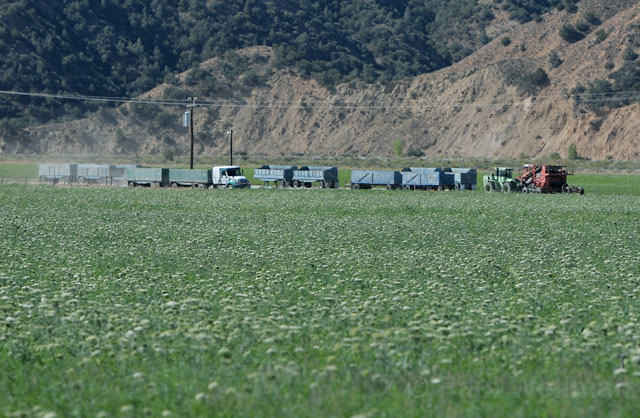
Take Nancy Ingalls, who moved into a home surrounded by Cuyama carrot farms about two years ago. For the past year, she’s been battling breast cancer — unrelated to the farming, but requiring both a mastectomy and six months of “horrible chemotherapy” — and must remain on medications until next year. When Ingalls learned that the adjacent farm was about to spray the pesticide malathion from helicopters to cure a bad case of the leafhopper bug last month, her oncologist at Santa Barbara Hematology/Oncology wrote a letter to the company, Kern Ridge Growers, recommending that she leave the area during the spraying.
“He was very adamant about me getting out of there,” said Ingalls, who fled at the sight of helicopters on a Wednesday to her brother’s house in Santa Barbara, only to find out later that the spraying didn’t happen until Saturday, August 28. “With all of Santa Barbara County’s stiff regulations about health and safety, I can’t believe they’re allowing agribusiness to spray a neurotoxin, malathion, on people, their homes, and livestock. There are quite a few families living near me on Highway 33 in Ventucopa, and we all feel dumped on.”
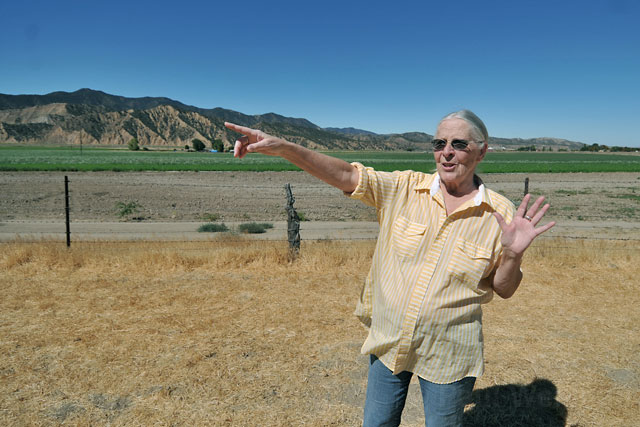
The dumping dread has been building over Ingalls’s friend Jolaine Gorilla since the late 1980s, when she retired with her husband to an 80-acre Ventucopa ranch before the big carrot farmers took over the surrounding fields. “They were chaparral, and people had horses on them,” explained the native Texan and former San Fernando Valley-ite. “It was just quite lovely.” Though told that the fields would one day be converted to ag, Gorilla explained, “I was naïve. I was not thinking industrial, corporate farming,” which she believes is a far stretch from the “real farms” of her Texas childhood. “It wasn’t about raping and pillaging the land,” she said. “It was about taking care of it, and that has just been lost.”
Nonetheless, she bit her lip until 1994, when wind kicked up sulfur that was recently sprayed on a nearby field. “I was blinded for about an hour or two,” said Gorilla, who quickly learned she was allergic to the substance. “I just sat there with teabags on my eyes.” After that incident, whenever the pesticide planes took to the skies, Gorilla was prone to go “outside with a broom and a shovel and chase the airplane, yelling epithets.” Today, she wonders why the neighbors of farms aren’t given the same consideration as the workers, who are instructed on how to dress and where to get their blood tested. “We’re supposed to stay in the house and close the windows,” she said. “It just infuriates me.”
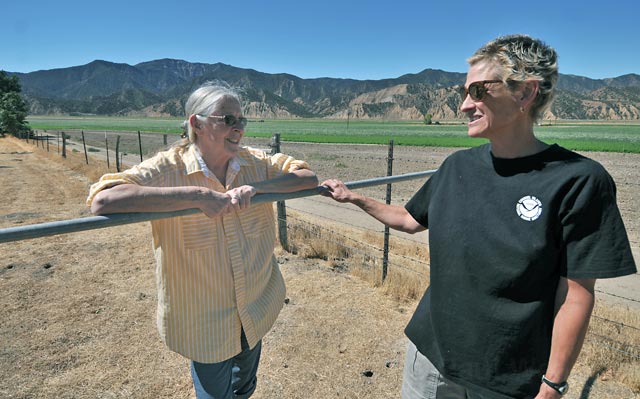
The pesticides, however, are totally legal under state law. “They have a right to use it as long as they follow the label,” said Susan Bryant, the deputy commissioner for pesticide enforcement in Santa Barbara County, explaining that farmers must submit pesticide reports every time one is used. The county also does surprise inspections and investigates citizen complaints, which are on the rise as the urban landscape increasingly encroaches upon the rural. “It’s happening more and more when people are living near the fields where crops are being grown,” said Bryant. “This is a statewide issue.” But she’s satisfied that the state law is strong. “There’s a ton of research done by scientists,” she said. “I trust their judgment.” As to whether the county has forgotten about the residents of the Cuyama Valley, Bryant laughed, explaining she thought that was part of the charm. “I know we don’t ignore it,” she clarified. “We do the best we can to get out there and do what we need to do.”
Though Grimmway Farms and Bolthouse Farms are the biggest agricultural operations in the Cuyama Valley, the farming company causing the current grief is Kern Ridge Growers, which has been harvesting carrots for 35 years. The company declined to speak about this matter, but email correspondence between a representative and the residents show a genuine effort to be transparent about what was being sprayed and when, and to cover any incurred costs, as well. One email even expressed regret, offering, “So sorry for the inconvenience to you all.”
But Grimmway’s farm manager, John Guerard, was happy to discuss the carrot business, explaining that the vegetable prefers sandy loam soil, warm days, and cooler nights. That makes Cuyama the perfect place for two full growing seasons, especially in the summer, when the other carrot zones of the San Joaquin and Imperial valleys can be too hot at night. Grimmway reaps about 20 percent of its annual income from the Cuyama Valley, where it grows both organic and conventional carrots, as well as a wide range of other organics, “from dandelions to kale to kohlrabi,” said Guerard. On the conventional carrots, the company uses fungicides (usually sulfur, which can be used on their organic crops, too) and herbicides, but only hand-weed the organic carrots, which is an expensive, labor-intensive process. Guerard occasionally uses pesticides, but not malathion, preferring a type of pyrethroid instead.
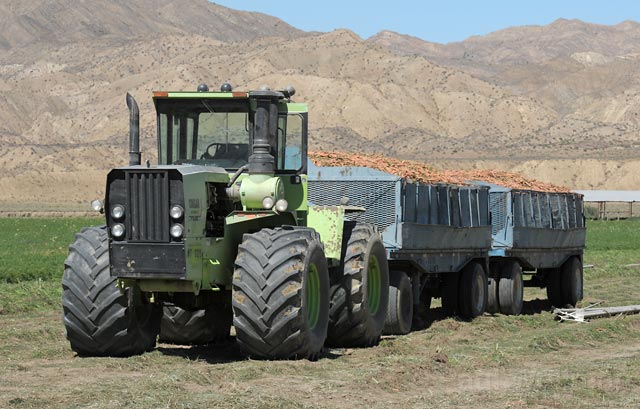
“Overall, I’d say the farmers are good stewards of the land,” said Guerard. “They have to be. These products are expensive. No one wants to use them unless they’re necessary for a particular pest.” And even then, said Guerard, “If used in the right way, it should be safe, even to residents nearby.” Since Grimmway’s crops are on the very sparsely populated north side of Highway 166, Guerard rarely gets complaints from residents, but knows they do occur. His take? “When they live out in an agricultural area, they have to expect farming to go on at some level.”
For Gorilla and Ingalls, the big farms are just part of the Cuyama Valley conundrum. They’re also worried about the sand and gravel mines that are further stressing the region’s water resources (which are currently being studied intensively by the U.S. Geological Survey) and adding to the “lease, leach, and leave” mentality. To help this often-forgotten valley better plan for the future, the women now help run the Cuyama Valley Conservancy, which Gorilla cofounded a couple years ago as her way to “nicely step on toes.” The organization, which is now on the radar screen of the big farmers, the miners, and the county, has a dozen or so members who meet to discuss their concerns for the future of the valley. “When you live in a place like this, you just fall more and more deeply in love with it,” said Gorilla, choking up. “It’s not about my property; it’s about the entire valley.”



